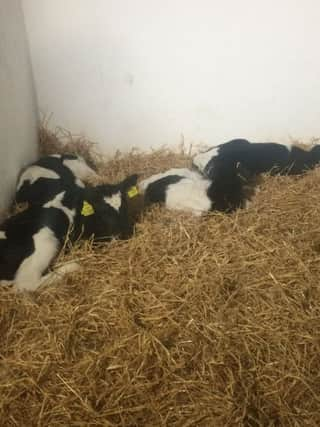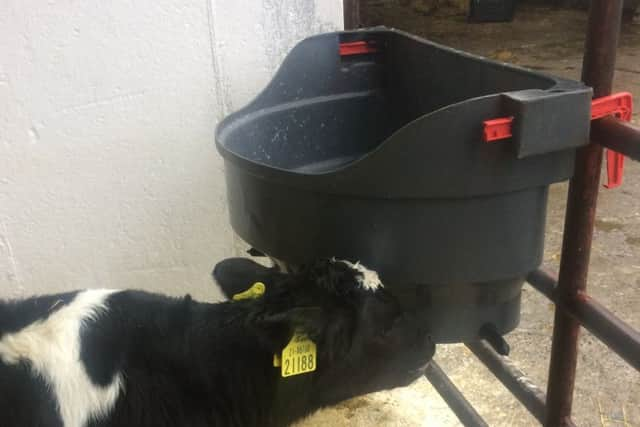Controlling calfhood disease


The importance of colostrum
Immunity does not pass through the placenta from the cow to the calf. When calves are born they are vulnerable to infection immediately. This is why the cleanliness of the ground and the surrounding calving environment influences the number and level of disease pathogens to which the calf is exposed.
The cleaner the environment, the less pathogens to which the calf is exposed to and the lower the likelihood of that calf picking up disease. Colostrum is critical in order to knock the balance of disease freedom back in favour of the calf. Colostrum must be given quickly, must be of good quality and be given in adequate quantity. It is recommended that three to four litres of colostrum be given within two hours of birth. Nipple feeding as opposed to stomach tubing has been shown to allow a greater proportion of immunoglobulins to be absorbed, however if calves are weak or will not suck an adequate volume within the time frame, stomach tubing is necessary. Colostrum collection and administration must be done in a hygienic manner.
Advertisement
Advertisement


Otherwise disease pathogens such as rotavirus and Cryptosporidium parvum can be ingested with dirty colostrum, causing scour.
Managing scour
Assuming a hygienic calf environment and appropriately timed colostrum administration, the next most important step in reducing the risk of scour on farm involves ensuring that the quality of the colostrum administered is adequate.
The new-born calf should be fed between 150 to 200 grams of immunoglobulins within the first 24 hours. However, the immunoglobulin level and therefore the quality of colostrum can vary between cows from less than 20 to over 100 mg/ml.


Clearly three litres of colostrum from a cow with a quality of 100mg/ml will contain significantly more immunoglobulins compared to a cow with a quality of 20 mg/ml. The only way to get more immunoglobulins into a calf being fed poor quality colostrum is to increase the volume. If in doubt about colostrum quality it can be simply measured on farm using a colostrometer or a refractometer.
Advertisement
Advertisement
The immunoglobulin level can be improved and homogenised between cows by vaccinating the cows against some of the most common scour-causing pathogens, namely rotavirus, coronavirus and E. coli K99. A single shot vaccine Rotavec® Corona can be administered to cows three to 12 weeks prior to calving so this can be achieved.
Tackling pneumonia
Research in Northern Ireland has shown that in the first two months of life, calves that are successfully treated for a single case of Bovine Respiratory Disease (BRD) produce 4% less milk in their first lactation and 8% less in their second.
Reducing the risk of calf pneumonia occurring in the first place therefore makes economic sense. The immunity or antibodies a calf receives from colostrum will wane at different rates for different diseases. For example antibodies that help to fight Mannheimia (formerly Pasteurella) haemolytic, one of the most common bacterial causes of neonatal deaths due to respiratory disease diagnosed by AFBI NI, will have fallen below protective levels by approximately three weeks, therefore prompting the calf’s own immune system to start developing protection against pneumonia at this stage is important.
Calves from approximately two weeks old onwards should be vaccinated against BRD. Bovipast® RSP for example, can be administered from two weeks of age with a second dose given four weeks later. This vaccine provides broad protection against two common viruses, BRSV and PI-3, and Pasteurella or Mannheimia haemolytica. Another advantage to this regimen is that Bovilis® IBR marker live can be given at the same time if IBR control is required on farm.
Advertisement
Advertisement
Increased growth rates during the first few months of a calf’s life have been shown to be positively associated with future milk production and survivability to second lactation. A preventative plan should be put in place in order to reduce the likelihood of anything that will hinder growth eg an outbreak of scour or pneumonia.